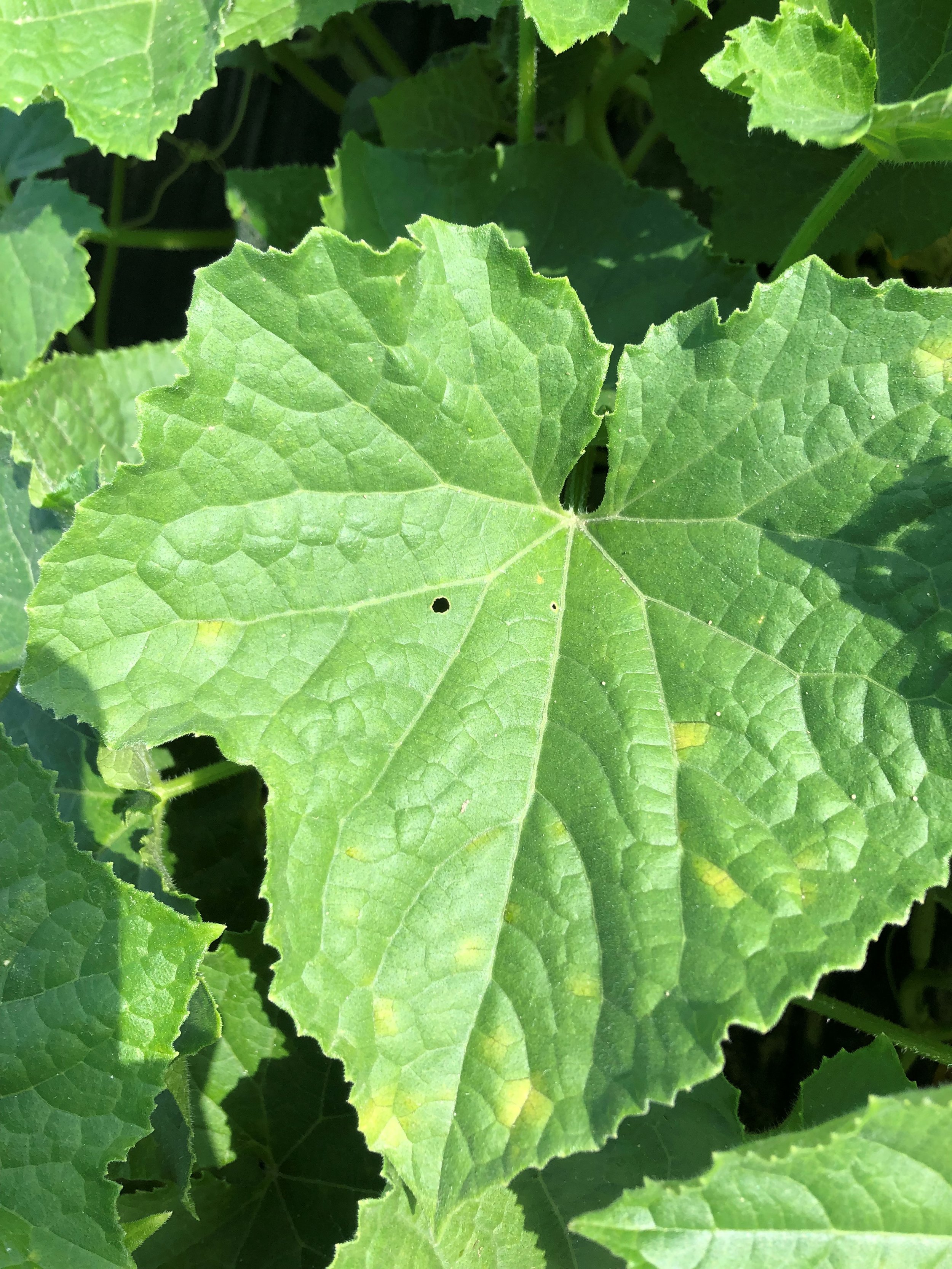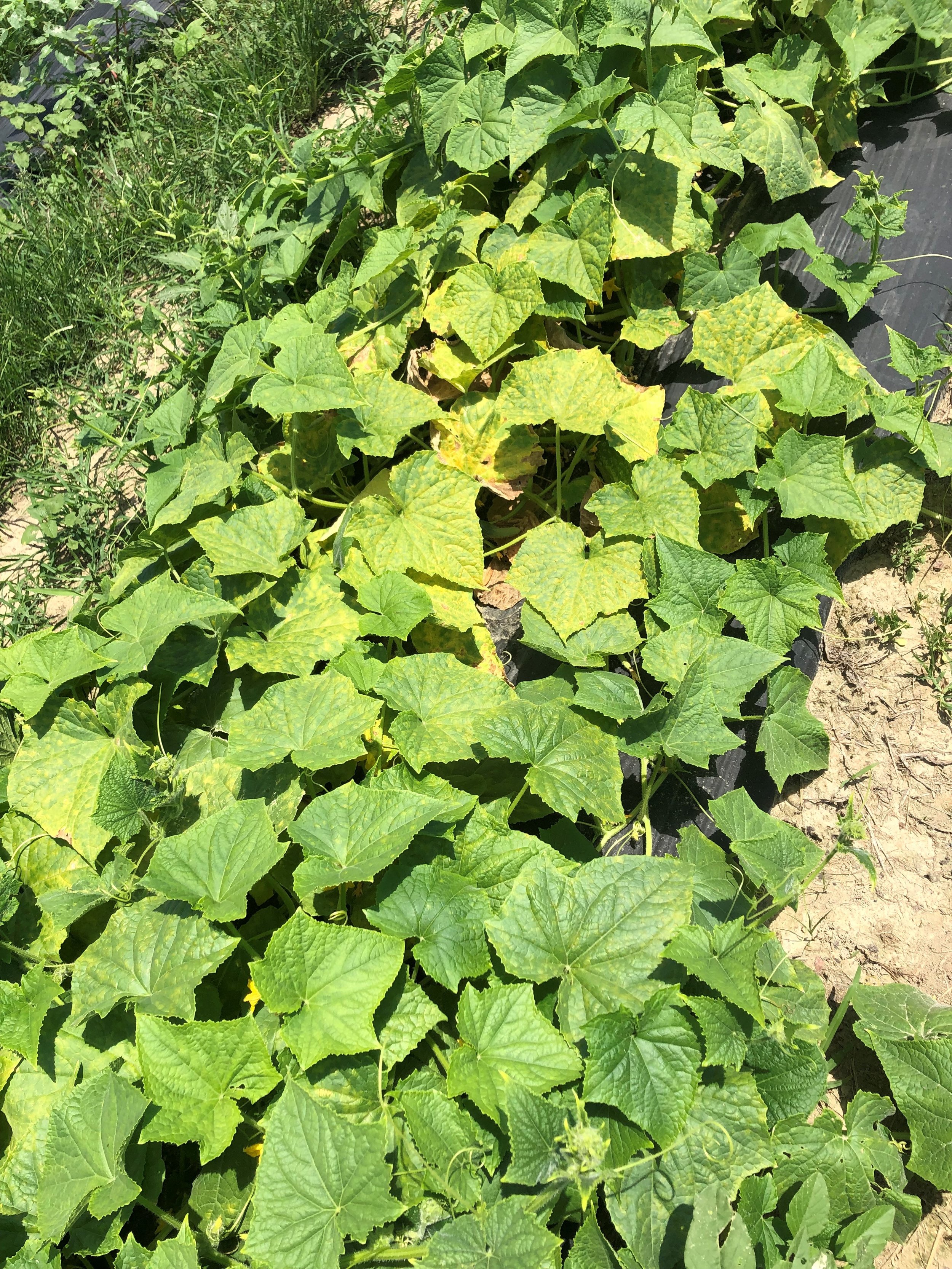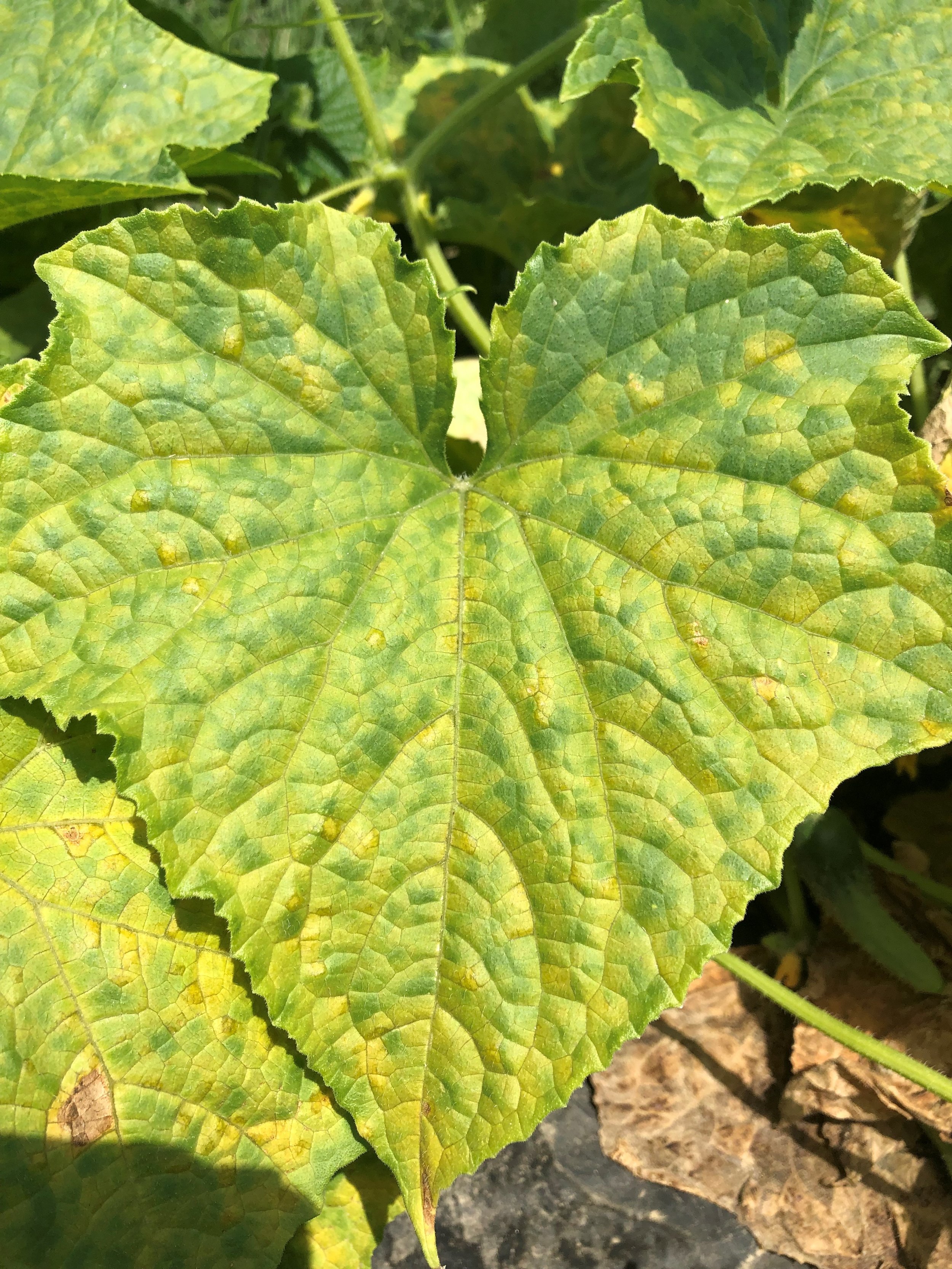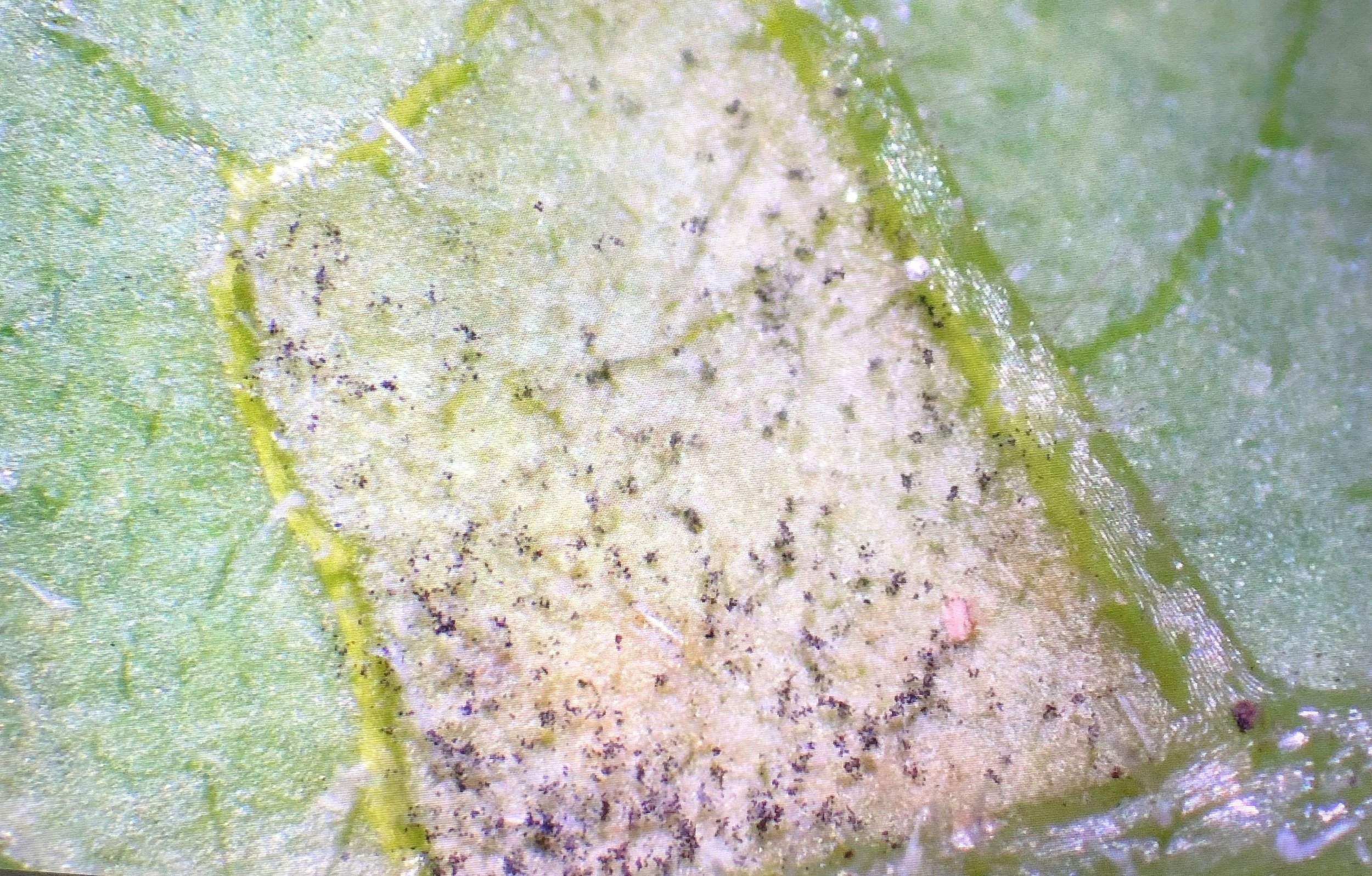Cucumber Downy Mildew Confirmed in Southern Virginia
By Dr. Zelalem Mersha, Assistant Professor, Agricultural Research & Cooperative Extension, Virginia State University Agricultural Research & Cooperative Extension
Cucurbit Downy Mildew (CDM) caused by the water mold, also known as oomycetous organism Pseudoperonospora cubensis, is a devastating foliar disease of cucurbits which may wipeout crops in a short window span if humid and wet weather prevails for a long time. The disease was confirmed on cucumber plants that were grown on Sentinel plots located at Randolph Farm in Southern Chesterfield County, Virginia. The disease was visibly noticed during a regular weekly scouting on July 8, 2019 right after the Independence Day holiday. Angular, yellowish lesions were seen on ‘Straight Eight' cucumbers and later on also found on slice cucumbers. The Sentinel plots at Randolph farm started last year. Whereas the months of May and June were record wettest in 2018, few days of precipitation and the intermittent storm could be a reason for early appearance of the disease despite a relatively longer dry spell during the month of June.
Growers and gardeners are advised to differentiate between the two types of mildews: powdery (PM) and downy mildew (DM). The latter is most common and easily recognizable by its symptom, white or grayish powdery fungal growth on plant surfaces.
Leaves with lesions were placed in Ziploc® plastic bags and were kept moist overnight for diagnosis. Under a microscope, fuzzy, blackish sporulation was clearly visible on the vein-bounded chlorotic (not having enough chlorophyll, which colors leaves green) lesions on the lower side of the leaves. In addition, the oomycete (fungus-like organisms commonly known as water molds) causing CDM were seen under a microscope. It was easy to see the dichotomously (divided equally from a terminal bud) branched sporangiophores (the sporangia-carrying organ; sporangia produce spores) and lemon-shaped sporangia of P. cubensis.
Where does CDM come from?
Pseudoperonospora cubensis, the water mold causing CDM, is an obligate pathogen (agent that causes disease). This means that a host plant needs to be present for it to survive. The pathogen alone will not live through the cold winter unless it is shielded in protected systems such as greenhouses and tunnels or on crop residues. it is most likely that the spores of P. cubensis may be carried from neighboring states. The spores can travel long distances by strong winds and storms. Or, they might also spread from transplants from areas with a heavy CDM infection. As of the week of July 8, the disease has been reported from two other counties, Isle of Wright and Accomack, in Virginia.
Management of Cucurbit Downy Mildew
Monitor and report downy mildew as early as possible. Please contact your county Extension office or Virginia Tech Plant Diagnostic Clinic if you see a symptom similar to what is pictured above. Once confirmed, the disease can easily be reported on a website (http://cdm.ipmpipe.org/). This will keep other growers in the region be informed of the prevalence of the disease. Then they can be alerted and prepare to take actions to prevent this disease and/or cure affected plants.
Fungicide sprays. The Southeastern U.S. 2019 Vegetable Crop Handbook is a very good resource to find registered and best-performing products against cucurbit downy mildew. The Handbook can be downloaded for free from Virginia Cooperative Extension.
The outreach and research studies at the Sentinel Plots is financially supported by the USDA Agricultural Marketing Service, Specialty Crops Multi-State Program (AM170200XXXXG007) on “Regional Approach to Cucurbit Downy Mildew Prevention, Monitoring and Management”.




